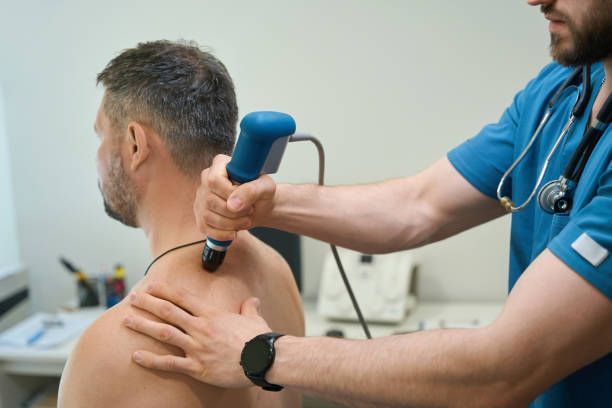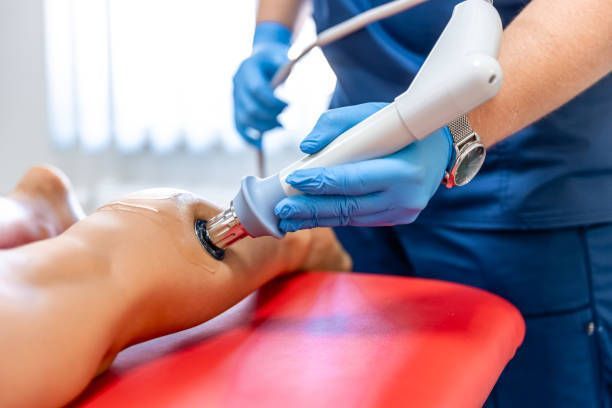The Better Way to Get Back Pain Relief
Growing research suggests that drugs and surgery may not be the answer for your bad back
By Teresa Carr
A typical week for Thomas Sells includes acupuncture, tai chi, yoga, and a couple of hours with a massage therapist and sometimes a chiropractor. You might think that the retired bank vice president and business manager in Southern California is simply enjoying a pampered spa lifestyle.
But Sells gets most of those services through the Department of Veterans Affairs—all for his aching back.
Those VA programs are more necessity than luxury, says Sells, who first injured his back carrying heavy packs as a combat soldier in the Vietnam War.
“None of these therapies were available to me back then,” he explains. “Had I known then what I know now, I could have avoided decades of debilitating pain.”
It used to be that those treatments were considered fringe, but no more. Growing research shows that a combination of hands-on therapies and other nondrug measures can be just as effective as more traditional forms of back care, including drugs and surgery. And they’re much safer.
In February the American College of Physicians—which represents primary care doctors, the providers people consult most often for a backache—issued new guidelines for back-pain treatment, saying that the first line of defense should be nondrug measures.
That advice is backed up by a new nationally representative Consumer Reports survey of 3,562 back-pain sufferers. It found that more than 80 percent of those who had tried yoga or tai chi or had seen a massage therapist or chiropractor said it had helped them.
Altogether, a higher percentage of people in our survey who saw a yoga or tai chi instructor, massage therapist, chiropractor, or physical therapist said the advice or treatment was helpful, compared with those who said they saw a doctor.
“Many physicians who are used to writing prescriptions right off the bat or sending patients for tests are going to have to rethink the way they manage back pain,” says Nitin S. Damle, M.D., a former ACP president.
But here’s the problem: People also told us that their insurers were far more likely to cover visits to doctors than those for nondrug treatments—and that they would have gone for more of that kind of treatment if it had been covered by their health insurance.
New Clues to ‘Cures’
Back pain strikes most of us at some point. It’s one of the main reasons people go to a doctor, accounting for more than 24 million visits each year in the U.S., according to the Centers for Disease Control and Prevention.
More than 1 of 4 in our survey said that an episode of back pain “severely” interfered with their daily life. One-third said that when the pain was at its worst, they had difficulty going to work. And 44 percent said they worried about the impact their aching back would have on their future.
But there’s good news. “Even though back pain can be severe at first, it almost always gets better,” says Benjamin Kligler, M.D., national director of the Integrative Health Coordinating Center for the Veterans Health Administration.
But “what has been considered ‘conventional’ care, including prescribing opioid pain medication, can actually short-circuit healing,” he says. These drugs include opioids such as hydrocodone and oxycodone.
As a young combat soldier, Sells says he turned to alcohol and illegal drugs to numb his back pain. “That took me down a dangerous road,” he recalls. “I became addicted.” With help from recovery programs, he says he has been clean and sober for 30 years.
But even with his attempts to self-medicate, his low-back pain continued to worsen over time. “It became so bad I could barely walk,” Sells says. “I consulted with surgeons, but I worried about the risks, and given my history, I didn’t want to take opioids.”
Instead, he looked for something safer, and came across a class at the VA in tai chi, which combines slow, gentle movements with deep breathing and meditation.
Soon he noticed improvements, gradually adding more exercise and hands-on therapies, which he says manage his pain while keeping his “mind, body, and spirit strong.” And he has become so good at tai chi that he now studies with a grand master. “It’s given me back my life,” Sells says.
Success stories like this, combined with new research, persuaded the agency to make nondrug therapies a foundation of its pain-treatment strategy. As a result, the VA has cut overall opioid use by 25 percent since 2012, according to a March 2017 analysis published in JAMA Internal Medicine.
Spinal manipulation did me a world of good. My chiropractor had me do a lot of exercises on my own, which I continue to do. I’m so happy to get my active life back.
-Rosemary Maziarz, St Charles, Ill.
Why Your Back Hurts
Medical experts surmise that back pain has bedeviled humans ever since we started walking on two feet, says Richard Deyo, M.D., a professor of evidence-based medicine at Oregon Health and Science University and an author of the main scientific review that led to the new ACP guidelines.
Standing upright requires the spine to support the weight of the upper body while still being flexible enough to bend in many directions. That puts a lot of stress on the back’s complex network of bones, muscles, and ligaments. For example, muscles and ligaments can be overstretched, the gel-like disks cushioning the spinal bones can bulge, and the disks can slip, pressing painfully on spinal nerves.
Sometimes, all it takes to trigger a malfunction is lifting something heavy, twisting awkwardly, or simply sitting too long with poor posture.
Aging can make the situation worse because disks wear and shrink. Add to that diminished strength and flexibility, and you have the perfect conditions for pain.
Too Many Tests and Treatments?
When a back attack strikes, often the first reaction is to run to a doctor for an X-ray or MRI to see what’s causing so much pain and possibly to ask for a prescription.
Doctors increasingly have an inclination to order more tests and write more prescriptions. A 2013 study in the Journal of the American Medical Association found that between 1999 and 2010, the prescribing of powerful narcotic pain meds increased by 51 percent, the use of CT and MRI scans jumped by 57 percent, and referrals to surgeons, neurologists, and other specialists more than doubled.
These kinds of escalating interventions are still the hallmark of how back pain is usually treated in the U.S., Deyo says. But those conventional approaches don’t always work and can cause other serious problems.
“Overall, we’ve seen no reduction in either pain or disability,” Deyo says. “And at the same time, rates of serious complications and even death are rising due to overuse of invasive treatments and opioids.”
Conventional treatment often fails because “it focuses on individual symptoms and broken parts,” says Donald Levy, M.D., medical director of the Osher Clinical Center for Integrative Medicine at Brigham and Women’s Hospital in Chestnut Hill, Mass.
Instead, he says, doctors “should be thinking about treating the whole patient—helping people get stronger, which will not only speed recovery but also help prevent future episodes of pain.” (For advice on how to do that, see “New Thinking On How to Relieve Back Pain.”)
Here’s how overusing common back-pain tests and treatments can make the discomfort worse, not better:
The Trouble With Imaging
A vast majority—82 percent—of our survey respondents who saw at least one healthcare professional for back pain said they got an X-ray, a CT scan, or an MRI. But most people who develop back pain don’t need those tests.
Why not? Because, Levy says, “the broken parts seen on imaging studies do not always correlate with the source or the degree of pain.”
But when doctors see signs of arthritis or other damage, they often have an urge to fix it, Levy says, “and that can lead to unnecessary surgery.”
It’s not always wise for patients to see those abnormalities, either, because it can undermine their confidence that they can continue to lead healthy, active lives. “All of a sudden, people may think, ‘I’m not someone with a temporary bout of pain, I’m a back-pain patient,’” says Matthew Kowalski, D.C., a chiropractor at the Osher Clinical Center. “And that image can stay with them for the rest of their lives.”
The Risks of Opioids and Surgery
About one-third of our survey respondents said they took prescription drugs for their back pain, and of those, 57 percent were prescribed opioids.
The ACP strongly advises against that practice. For one thing, opioids don’t necessarily relieve pain much better or help you move more easily than over-the-counter anti-inflammatory drugs such as ibuprofen (Advil and generic) or naproxen (Aleve and generic).
And though those OTC drugs pose some risks when taken long term, they’re still much safer than opioids. Narcotic medications often cause side effects such as constipation, drowsiness, headaches, and nausea. The longer you take them, the greater the risk of addiction and overdose, especially when taking high doses.
A recent review in the Journal of the American Medical Association of 20 trials involving nearly 7,300 patients found that opioids didn’t provide significant relief for people with chronic back pain. Further, half the participants dropped out early because the medication didn’t work or the side effects were intolerable.
Surgery should always be the last option, and only if your pain has lasted longer than three months with treatment and your symptoms are severe and clearly linked to the problem seen in an imaging test. But even then, it’s reasonable to hold off on surgery if you’re seeing improvement, Levy says.
For one thing, it can’t cure arthritis, injured or weak muscles, poor posture, or many other common causes of back pain.
Even symptoms caused by a herniated (slipped) disk or spinal stenosis (narrowing of the spinal column) may resolve over time with those simpler, less aggressive therapies. And taking that approach is safer than surgery, which carries rare but serious risks such as infection, blood clots, and damage to the spine.
I had never thought of doing yoga, but I found that it relieved tension and eased my back pain. I also sleep better. Now the prescriptions in my medicine cabinet are just gathering dust.
–Matthew Castro, San Diego
Personalize Your Treatment Plan
Everyone responds to pain differently, and there’s no set strategy for treating a painful back that works for all.
So where to start? Staying active is key, experts agree. The less active you are—and the longer you’re inactive—the faster your muscles weaken, your ligaments and tendons stiffen, and the cushioning between your disks dries out, all of which can delay your recovery, research suggests.
Yet three-quarters of our survey respondents reported bed rest as one of the first three treatments they tried. That, it turns out, wasn’t a good idea. When asked what they would have done differently to treat their pain, 43 percent of the back-pain sufferers said they wished they had exercised more.
“Relief is often on the other side of activity,” Kowalski says. “A good practitioner should teach you some exercises that you can do on your own, and also talk to you about the ergonomics of your daily activities, such as how you sit at your desk.”
Next, you may want to add a hands-on therapy such as acupuncture, massage, or spinal manipulation from a chiropractor, physiotherapist, or other healthcare practitioner, which can help alleviate pain as you work to get stronger.
And last, consider trying things to strengthen your mental outlook, such as mindfulness meditation, because pain affects people mentally as well as physically.
Thomas Sells says that a combination of approaches has worked for him. “I feel better now than I did as a much younger man,” he notes. “Mentally, physically, and spiritually, I’m in the best place in my life.”
Go to the original article for related articles and a video , ‘How one veteran found relief’: https://www.consumerreports.org/back-pain/the-better-way-to-get-back-pain-relief/



